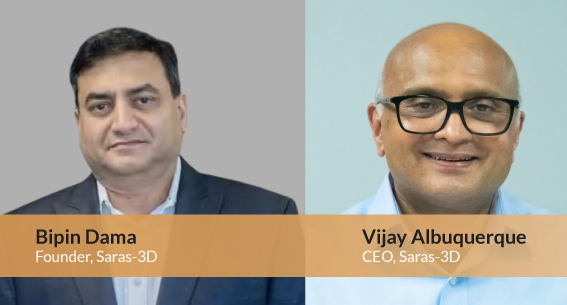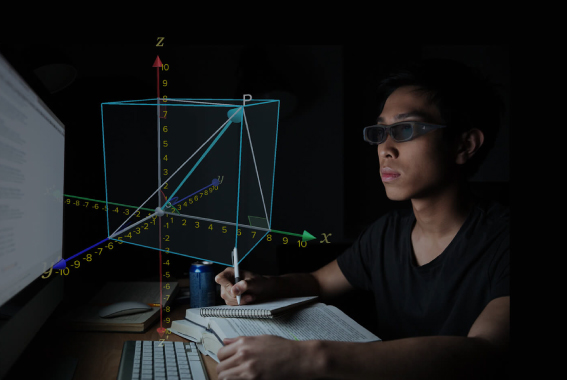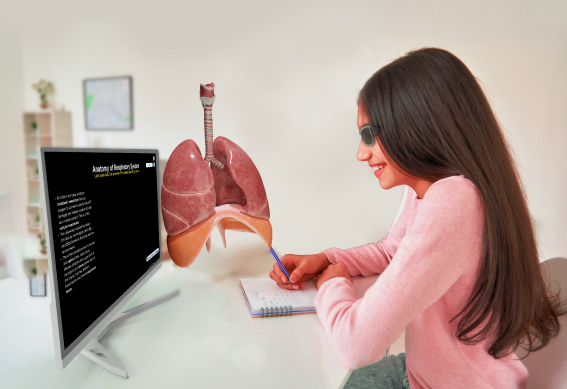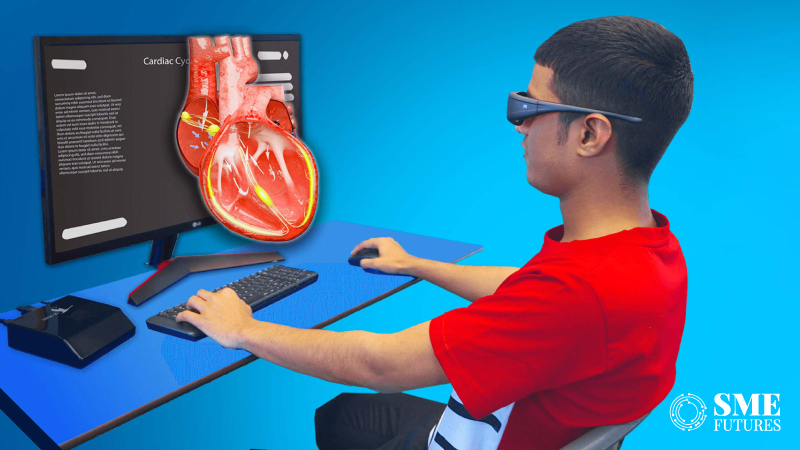John Dewey, an American philosopher and educator once said, ‘effective education is experiential’. Almost a century later, the sector’s evolving scenario demonstrates that Dewey was correct.
Over the years, we have witnessed a major shift in classrooms and the way in which concepts are being taught. In fact, the pandemic has brought a paradigm shift in the active and experiential learning space. And technology is a big part of it.
Due to this, the current learning trend has also shifted from trivia or memorisation. Meanwhile, hands on experience, learning through practicals, gamified learning, hybrid learning though online videos, etc. have become popular modes of learning. Among these, stereoscopic 3D technology is garnering a lot of attention as it provides a virtual space for learning.
“Virtual spaces are computer-generated environments that depict parts of the physical world or imaginary sceneries,” explains Vijay Albuquerque, CEO of Saras Inc. (Saras-3D).
Saras-3D is a two-year-old new age edtech start-up, founded by Bipin Dama, an innovator who holds 37 US patents. This start-up provides stereoscopic 3D learning solutions to enable the learning of STEM subjects and aims to elevate the education experience.

Understanding 3D tech education
Nowadays, students are under immense pressure to perform academically, says Albuquerque. “This expectancy has led to the widespread adoption of technology in classrooms. In the past, there was only a timid proliferation of technology in education,” he points out.
The inception of 3D tech in learning makes concepts clearer and learning easier.
“Stereoscopic 3D is now the cornerstone of the new way of learning with technology. It means that students learning with 3D vision achieve significantly better results than the students who work in 2D,” Albuquerque adds.
“That’s because there is only a superficial level of engagement with 2D learning, resulting in a more superficial and passive transfer of knowledge. On the contrary, learning in 3D makes learning lively and meaningful. The 3D experience involves spatial thinking that boosts the effectiveness of learning. Moreover, it allows for a more significant amount of involvement in the learning process and is motivational and interdisciplinary at the same time,” he explains.
Also Read: Indian online higher education market poised to reach $5 bn by 2025: Report
When the content can be explored in a three-dimensional, interactive way, it supports the growth of knowledge and leads to a more profound understanding of the given subject, according to him. An independent hands-on experience has a stronger impact on students’ engagement levels. It reduces certain degrees of abstraction through simulators and thus, facilitates the understanding of complex knowledge.
Simply put, knowledge is transferred not only through visualizations, but also through hands-on experiences. “Student can grab and hold the model as they alter, rotate, and explore. This enables the participants to make decisions such as communications, analyses, evaluations, and revisions that cannot be made as conveniently in any of the individual modes alone,” he tells us.

There is an education gap
The Indian education system has been an effective one. Post the 90’s, the scenario had changed a lot. Currently, a mix of technology, a cross-cultural landscape and the need for skilled people has changed the scenario even more. But there are a few fundamental challenges that stop every Indian from getting a quality education, as per Albuquerque.
“To begin with, there is a divide between those who do and do not have access to high quality education,” he says. This factor determines a students’ opportunity to reach their full potential.
“Another problem is internet access,” he says. Despite large-scale internet penetration throughout the country, the biggest difference in edtech between India and many other countries is that of internet access. While other countries have widespread internet availability, the 2017-2018 report from the National Sample Survey Office (NSSO) showed that only 24 per cent of the Indian population had reliable internet access.
Albuquerque tells us that Saras 3D aims to resolve such problems through stereoscopic 3D tech. “Saras-3D’s Genius 3D Learning is available without the internet,” he says. So, it can accommodate all schools and students. “This makes our hands-on learning tool accessible to everyone, which brings us closer to our mission of democratising high-quality education for all,” he asserts.
If more students have access to high quality education, then more of them will be able to shape their lives and fulfil their dreams, says Albuquerque. “This is how education creates more possibilities in the world. And that’s why we’ve made it our mission to democratise high quality education so that everyone can have that chance,” he says.
3D for STEM- It’s a problem solver
According to him, Saras-3D is the outcome of the natural progression of edtech.
When we ask him about how it makes learning fun, he answers, saying, “The 3D technology helps teachers to digitally engage students, empowering them to learn faster and more deeply. Through virtual, hands-on learning, students actively learn the topic rather than passively learning about it.”
Albuquerque believes that 3D stereoscopic technology has the power to transform students into future problem solvers and innovators because it creates the ideal conceptual learning environment.
Instead of merely reading chapters or passively watching a video, students can “interact” with 3D simulations. “Scaled models” depict a topic the way it exists in real life, helping students to experience the material through direct interactions. It deepens understanding while developing creativity, leadership, creative self-efficacy, energy, risk-taking propensity, and ambiguous problem-solving. It is all activated through hands-on experience and real-world application in an environment where mistakes are easily fixed, and curiosity is the guide.
“The ultimate result is two-fold. Students master skills swiftly, while parents relax, knowing that their children are engaged and are actively achieving their academic goals,” he avers.
Also Read: Practically, the edtech sector will always remain a support system for the education sector
So far, after years of research and development with top engineers, educators, and subject matter experts, Saras-3D has unveiled its product— the Genius 3D Learning system, which makes hands-on learning accessible to everyone. From in-classroom learning to at-home preparation for JEE and NEET exams, Genius 3D Learning fully engages students and rekindles their curiosity as they realize their academic potential, says Albuquerque.

Collaborations and future plans
Saras-3D is aligned with India’s National Education Policy. “Specifically, Genius 3D Learning supports the government’s initiatives to boost conceptual learning strategies and bring more technology into the classroom. By maintaining this alignment, we look forward to continued government support for 3D education in India,” Albuquerque says.
At the same time, the company claims that it profits from collaborations with educational institutions as well.
“We are dedicated to equipping students with the best tech available, which also helps them to prepare for JEE, NEET, and other entrance exams. This is how we will help more students succeed across India. Simultaneously, we are also partnering with schools throughout India to support teachers in the classroom. Using this technology, teachers will be better able to retain their students’ attention and teach them the meaning behind complex concepts in a more engaging manner,” he informs us.
Recently, this start-up has launched a school sponsorship programme in collaboration with CHARUSAT University. Via this initiative, they have already chosen a cohort of ten schools from Gujarat to implement their Stereoscopic 3D Classroom Experience and Lab Experience, which are valued at Rs 50 lakhs.
Also Read: Rethink education: Learning beyond classrooms is the new normal
According to the platform, the company hopes to reach 10,000 students in FY22. On the back of a Rs 100 crore turnover, the company claims to have increased its user base tenfold to approximately one lakh active users in FY23.
“We will continue to expand throughout India, in both the urban and rural areas until we become ubiquitous. And we will continue to reach out to a broader range of parents and students across the country,” Albuquerque avers.











